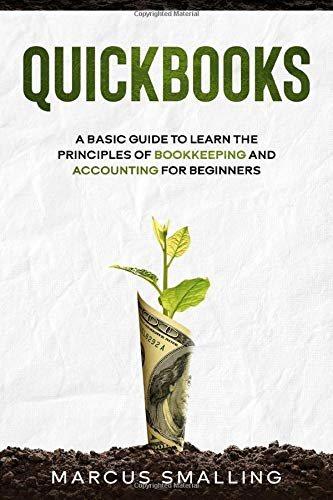Question
PA2-7 Selecting an Allocation Base and Analyzing Manufacturing Overhead [LO 2-3, 2-5] Amberjack Company is trying to decide on an allocation base to use to
PA2-7 Selecting an Allocation Base and Analyzing Manufacturing Overhead [LO 2-3, 2-5]
Amberjack Company is trying to decide on an allocation base to use to assign manufacturing overhead to jobs. The company has always used direct labor hours to assign manufacturing overhead to products, but it is trying to decide whether it should use a different allocation base such as direct labor dollars or machine hours. Actual and estimated data for manufacturing overhead, direct labor cost, direct labor hours, and machine hours for the most recent fiscal year are summarized here:
|
| Estimated Value |
| Actual Value | ||||
| Manufacturing overhead cost | $ | 594,000 |
|
| $ | 655,000 |
|
| Direct labor cost | $ | 396,000 |
|
| $ | 450,000 |
|
| Direct labor hours |
| 16,500 | hours |
|
| 18,000 | hours |
| Machine hours |
| 7,500 | hours |
|
| 8,500 | hours |
Required: 1. Based on the companys current allocation base (direct labor hours), compute the following: a. Predetermined overhead rate. (Round your answer to 2 decimal places.) Predetermined Overhead Rate b. Applied manufacturing overhead. Manufacturing Overhead c. Over- or underapplied manufacturing overhead. Manufacturing Overhead 2. If the company had used direct labor dollars (instead of direct labor hours) as its allocation base, compute the following: a. Predetermined overhead rate.
Predetermine Overhead Rate b. Applied manufacturing overhead. Manufacturing Overhead c. Over- or underapplied manufacturing overhead. Manufacturing Overhead 3. If the company had used machine hours (instead of direct labor hours) as its allocation base, compute the following: a. Predetermined overhead rate. (Round your answer to 2 decimal places.) Predetermined Overhead Rate b. Applied manufacturing overhead. Manufacturing Overhead c. Over- or underapplied manufacturing overhead. Manufacturing Overhead
4. Based on last years data alone, which allocation base would have provided the most accurate measure for applying manufacturing overhead costs to production?
|
| Machine Hours |
|
| Direct Labor Hours |
|
| Direct Labor Cost |
PA2-5 Recording Manufacturing Costs and Analyzing Manufacturing Overhead [LO 2-3, 2-4, 2-5]
Christophers Custom Cabinet Company uses a job order cost system with overhead applied as a percentage of direct labor costs. Inventory balances at the beginning of 2016 follow:
|
| ||
| Raw Materials Inventory | $ | 20,000 |
| Work in Process Inventory |
| 15,000 |
| Finished Goods Inventory |
| 32,000 |
The following transactions occurred during January: (a) Purchased materials on account for $26,000. (b) Issued materials to production totaling $40,000, 80 percent of which was traced to specific jobs and the remainder of which was treated as indirect materials. (c) Payroll costs totaling $69,700 were recorded as follows: $18,000 for assembly workers 5,200 for factory supervision 31,000 for administrative personnel 15,500 for sales commissions (d) Recorded depreciation: $8,500 for machines, $2,400 for the copier used in the administrative office. (e) Recorded $4,000 of expired insurance. Forty percent was insurance on the manufacturing facility, with the remainder classified as an administrative expense. (f) Paid $7,800 in other factory costs in cash. (g) Applied manufacturing overhead at a rate of 300 percent of direct labor cost. (h) Completed all jobs but one; the job cost sheet for this job shows $10,000 for direct materials, $3,000 for direct labor, and $9,000 for applied overhead. (i) Sold jobs costing $70,000. The revenue earned on these jobs was $91,000.
Required: 1. Set up T-accounts, record the beginning balances, post the January transactions, and compute the final balance for the following accounts: (Post all amounts separately. Do not combine/add any dollar amounts when posting to the T-accounts.)
a. Raw Materials Inventory.
b. Work in Process Inventory.
c. Finished Goods Inventory.
d. Cost of Goods Sold.
e. Selling, General, and Administrative Expenses.
f. Sales Revenue.
g. Other accounts (Cash, Payables, etc.).
2. Determine how much gross profit the company would report during the month of January before any adjustment is made for the overhead balance.
Unadjusted Gross Profit
3. Determine the amount of over- or underapplied overhead.
Manufacturing Overhead
4. Compute adjusted gross profit assuming that any over- or underapplied overhead balance is adjusted directly to Cost of Goods Sold.
Adjusted Gross Profit
Step by Step Solution
There are 3 Steps involved in it
Step: 1

Get Instant Access to Expert-Tailored Solutions
See step-by-step solutions with expert insights and AI powered tools for academic success
Step: 2

Step: 3

Ace Your Homework with AI
Get the answers you need in no time with our AI-driven, step-by-step assistance
Get Started


